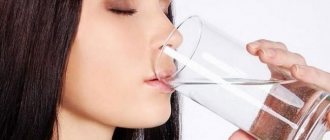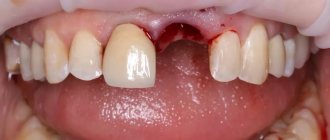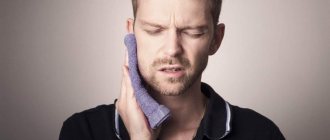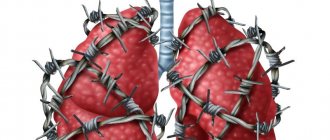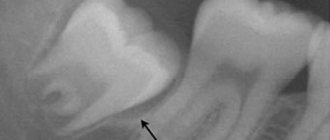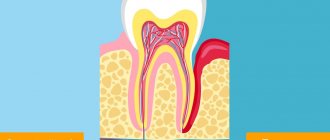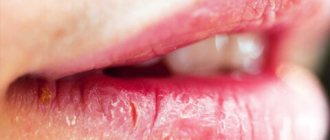The lips are skin-muscular folds, the structure of which is divided into three parts - cutaneous, intermediate and mucous. The pink areas, the so-called vermilion border of the lips, are covered with a transparent stratum corneum, which is exposed to high temperatures, chemicals, and ultraviolet radiation. They contain 100 times more nerve fibers than the fingertips. Therefore, a lip burn is always accompanied by burning, acute pain and itching. The injury causes severe discomfort and makes eating difficult. Delayed or incorrect treatment leads to infectious inflammation.
Why is a lip burn dangerous?
Lips are one of the most unprotected areas of the body, subject to the destructive effects of chemicals, high temperatures, and radiation. Burns are often accompanied by damage not only to the skin, but also to the oral mucosa. Tissue injury leads to:
- throbbing pain;
- burning;
- redness;
- blistering;
- detachment of the mucous epithelium.
Failure to promptly treat wounds with antiseptics can lead to tissue infection. After healing, noticeable scars and white spots remain on the lips.
Treatments to avoid
Avoid using petroleum jelly and any moisturizers that contain petroleum jelly. Although oil is effective at retaining moisture, it cannot restore moisture once it has been lost.
Lidocaine and benzocaine are effective local anesthetics but are not suitable for treatment because they are not intended for use on the lips; they can also cause an allergic reaction.
You should avoid blisters and let them resolve on their own. The blisters create a protective barrier, preventing germs from entering; the fluid inside protects the damaged skin from further injury.
Types of burns
Burns lead to the destruction of skin cells and mucous epithelium that covers the inner surface of the lips. Injury occurs when contacting:
- chemicals - acids, alkalis, lime;
- high temperatures - boiling water, hot objects;
- radiation - ion or light radiation.
The greatest danger is chemical burns. In 35-40% of cases they are complicated by infectious inflammation, which prevents the tissues from healing. Damaged lips with bleeding wounds worsen the quality of life. A person cannot eat properly or communicate with others. Severe burns cause problems breathing and sleeping.
Thermal
Indicators of burn injuries in the world range from 250-350 cases per 100 thousand people. Moreover, about 30% of all thermal burns are accompanied by damage to the lips. The cause of injury is the thermal factor. Contact with liquids and objects whose temperature exceeds 42°C inevitably leads to the destruction of skin cells.
Young children and women are more susceptible to injury. In 39% of cases, the mucous membrane of the hard palate, gums and tongue are simultaneously damaged. Burns are caused by:
- hot objects;
- boiling oil;
- hot water, etc.
Based on the depth of damage, superficial and deep burns are distinguished. The higher the temperature of the liquid or hot object, the more serious the lip injury. Sometimes not only the skin or mucous membranes are damaged, but also the muscles with the subcutaneous fat layer.
Solar
The spectrum of solar radiation has an ultraviolet part, which is electromagnetic waves with lengths from 10 to 400 nm. Short-wave UV rays in the range from 100 to 280 nm have a detrimental effect on the skin and mucous membranes. They destroy protein components, causing 1-3 degree burns.
Ultraviolet irradiation is possible when sunbathing or visiting solariums. Signs of sunburn include:
- burning;
- swelling;
- peeling of the skin;
- pain when touched.
At the first sign of sun injury, you should stop using the solarium or stop sunbathing.
Chemical
Chemical burns can occur from contact with irritating substances, which include:
- iodine;
- lime;
- ammonia or medical alcohol;
- concentrated soda solution;
- battery electrolytes;
- aggressive detergents, etc.
The degree of damage to the skin and mucous membranes of the lips depends on three factors:
- reagent concentration;
- duration of contact with the chemical;
- presence of cracks on the lips.
In 84% of cases, chemical burns are accompanied by death of the affected tissue. When acids come into contact with the skin, dark brown scabs form. But the greatest danger comes from burns from alkalis. They penetrate deep into the skin and fatty tissue, causing 3rd degree burns.
The danger of chemical injuries lies in the toxic effects of certain substances. The penetration of some of them into the blood leads to poisoning of the body, as evidenced by:
- diarrhea;
- dizziness;
- weakness in the body;
- pale skin;
- excessive sweating, etc.
Failure to provide assistance in a timely manner leads to even greater damage to the lips, oral mucosa, esophagus, etc.
Ray
Radiation burns are often a consequence of radiation therapy in the treatment of malignant tumors in the maxillofacial area. Ionizing radiation spreads to healthy areas of the mucous membrane and skin. The following symptoms indicate radiation injury:
- redness of lips;
- swelling;
- numbness;
- erosion.
Over time, the affected areas of the mucous membrane become cloudy and lose their natural shine. As the radiation dose increases, a sticky coating forms, which indicates tissue necrosis. Damage to the salivary glands leads to excessive salivation. Over time, it gives way to dryness.
Why does it hurt so much
The skin is the largest organ: 4−6% of the total body weight. It contains up to 82% water and a third of the total blood volume. There are 2 million nerve endings in the skin, 1.5 million of them are pain receptors.
Temperatures above 44 °C destroy skin proteins - the integrity of the cell membranes is disrupted and water from the cells goes into the space between them. This can be illustrated using an egg as an example. It contains approximately 73% water, 13% protein, 12% fat and minerals. When cooked, the proteins in the cell membrane are destroyed and folded - water comes out. The same thing happens to the skin, only the water goes into other tissues. Therefore, swelling occurs.
Then platelets stick together in the vessels of the dermis and clog the lumen. The blood supply to the burned area is reduced, which can lead to complete tissue death if help is not provided in time. A burn also leads to the release of substances into the blood that provoke inflammation.
Degree of damage to skin and mucous membranes
Clinical manifestations of burns and methods of their treatment depend on the depth of tissue damage.
It is very important not to apply oily products to such burns, since oils only promote the proliferation of pathogenic microorganisms.
Each degree corresponds to specific symptoms that determine the severity of the damage:
- First. The cells of the outer layer of skin and mucous epithelium on the inner surface of the lips are destroyed. It manifests itself as moderate swelling, redness, pain or burning. A mild burn can be treated for no more than 3-5 days with regenerating and antiseptic agents.
- Second. All layers of the skin are damaged up to the basement membrane, which is adjacent to the dermis. The second degree is accompanied by swelling, redness, and blisters. Symptoms disappear within 10-14 days with adequate treatment.
- Third. The epidermis, superficial or even all layers of the dermis are destroyed. The damaged area turns bright red and blisters form on it. Due to the burn of sensory receptors, painful sensations are dulled.
- Fourth. Cells of all layers of the skin die, down to the subcutaneous layer, which consists of adipose and connective tissue. The muscles and bones of the lower or upper jaw are damaged.
With deep injuries, the mucous membrane swells and turns outward. Because of this, the red border of the lips visually resembles the mouth of a fish.
Causes of damage after hair removal
Among the most common, there are five main ones:
- radiation wavelength is too short;
- presence of even a slight tan;
- incorrect selection of laser for the skin phototype according to Fitzpatrick;
- poor technical condition of equipment;
- gross violations in the actions of the cosmetologist.
Wavelength
One of the key characteristics of laser operation. For example:
- The ruby system, wavelength - 694 nm, perfectly distinguishes melanin. But it penetrates shallowly and often leaves burns on the skin. As a result, it cannot remove hair follicles.
- The Alexandrite laser already has a wavelength of 755 nm. He is able to penetrate quite deeply. But the darker ray interferes with the perception of melanin. The likelihood of burns after an alexandrite laser is much less.
- The popular diode unit is available with a wavelength of 808 nm. It is able to find and remove the follicle, even if it is deeper than 4 mm. The possibility of burns in this case is minimal.
As you can see, the shorter the laser wavelength, there is a greater chance of burns.
A tan
This is another reason for burns during laser hair removal procedures. The skin darkens, and the hairs, on the contrary, lighten. The laser beam cannot recognize them and targets the skin. Unfortunately, a large number of beauty salons do not want to lose a client who has a tan. Therefore, they take risks despite the possibility of injuring the client.
Phototype according to Fitzpatrick
What it is? This is a classification of skin color in humans. The scale was developed in 1975 and is still used in cosmetology today. According to it, 6 skin types are distinguished:
- Celtic - bright representatives have milky white skin and freckles;
- European light-skinned - people of this type have fairly light skin;
- European dark-skinned - have a light brown skin tone;
- Mediterranean - dark-skinned;
- Indonesian - very dark;
- African American - those with dark skin.
Laser hair removal specialists must take into account the characteristics of each type, for example:
- alexandrite and ruby apparatus are not suitable for safe operation on dark skin (types IV-VI);
- the diode installation is able to show its effectiveness even on the skin of African Americans;
- the neon system is safer for those with phototype VI.
Poor condition of the laser system
Technical failure is a dangerous and common cause of burns. Yes, a cosmetologist can only suspect that the laser is not working as it should. Only a technical specialist can perform calibration. Regular equipment maintenance can solve this issue.
Gross mistakes of a specialist
In many ways, these reasons repeat those described above, but the safety of your skin depends on the qualifications of the specialist and his decisions. Let’s summarize the errors and consider possible solutions:
| Violation | Result | Solution |
| Allowing a patient with a fresh tan to the procedure. | Burns. | Refusal to carry out the procedure, postponing the session for two weeks. |
| Careless work with hard hair structure. | Overheating of the installation and burns. | Periodically wipe the head of the sapphire system. |
| Ignorance of the operating principle of a diode laser. | Burns. | Ensuring a tight fit to the patient's skin. |
| Selecting too high a radiation power. | Skin damage. | Study the instructions for the device. |
First aid algorithm
If lips are injured by chemicals or boiling water, it is necessary to provide emergency assistance to the victim. The speed of tissue healing depends on the timeliness and correctness of actions.
Algorithm for providing first aid:
- Washing. For any type of burn, you need to wash the damaged areas of your lips with running water. The procedure should take at least 10 minutes.
- Neutralization of the reagent. If the burn is caused by alkalis, they are neutralized with a weak solution of citric acid. If acid gets on the lip, use a soap or 5% soda solution.
- Anesthesia. To eliminate the burning sensation, take an anesthetic drug - Nimesulide, Ketorolac, Nurofen, etc. To enhance the analgesic effect, the victim is given 1 tablet of Spazmex, Romazulan or Spazmalgon.
For burns caused by quicklime, do not wash your lips with water. In such a situation, use a 20% sugar solution. Cotton pads are moistened in it and applied to injured skin and mucous membranes. Further therapy depends on the degree of damage to the lips. If there is severe drooling, throbbing pain and mucosal detachment, consult a doctor.
Treatment of scars after burns
If you are interested in how to get rid of the external consequences of a burn, you need to know that in case of serious damage to the skin, the scar will remain in any case. Here you will need the help of a cosmetologist who will help restore the normal appearance of the skin.
Typically, for such an operation, a scar excision technique is used, after which several cosmetic sutures are applied to the tissue. When the sutures are removed, the damaged area is treated with ointments that prevent the formation of new scars on the skin.
For particularly difficult cases, for example, burns from boiling water, the laser resurfacing technique is used. Modern equipment allows you to completely remove scars and achieve perfect skin. If the severity of the burn is insignificant, chemical peeling with fruit acids is recommended.
How to treat a lip burn: restorative therapy
Treatment of burn injuries is aimed at eliminating inflammation and restoring tissue integrity. Superficial burns are treated with topical medications at home. If the cells of the dermis and subcutaneous fat are destroyed, the victims are hospitalized in a burn center.
Pharmacy products
Anti-burn ointment, gel or spray will help reduce pain and inflammation in the affected areas. Treatment for superficial burns includes:
- Pantestin is a wound-healing gel with dexpanthenol, which has anti-inflammatory properties. Apply exclusively to the skin in a thin layer three times a day.
- Rescuer is a cream with regenerating, softening and antiseptic action. Prevents skin from cracking when crusts form on the lips.
- Panthenol is a hygienic lipstick with provitamin B5, which stimulates scarring of the skin. Contains shea butter, therefore it has a softening effect on burned tissues. Use no more than 4-5 times a day.
- Levomekol is an antimicrobial agent with wound healing and anti-inflammatory properties. A compress with ointment is applied to the burned areas of the lips three times a day.
- Levosin is a combined antimicrobial ointment that accelerates the exfoliation of dead tissue. Prescribed for purulent inflammation of the lips, non-healing ulcerations.
To treat the inner surface of the lips, solution antiseptics are used - a weak solution of tannin or furatsilin. Pain is relieved with non-narcotic analgesics - Tempalgin, Ibuprofen, Baralgin.
Traditional methods
Alternative medicine is used to speed up metabolism in the skin, increase local immunity, and disinfect the oral mucosa.
As a concomitant treatment, too hot dishes, as well as spicy, salty, smoked and spicy foods, which slow down the wound healing process by irritating the mucous membrane, are excluded from the patient’s diet.
For burn injuries of the lips the following are used:
- Chamomile decoction. 1 tbsp. l. herbs are poured into 250 ml of water and boiled for 10 minutes. Rinse with the strained broth every 1.5-2 hours.
- St. John's wort decoction. 10 g of raw material is poured into 300 ml of water and boiled for 5-7 minutes. Moisten gauze or cotton pads in the decoction and apply to the lips for 30 minutes 4-5 times a day.
- Burdock and plantain. Burdock root and plantain leaves are crushed and mixed in equal proportions. The pulp is wrapped in sterile gauze and applied to the lips three times a day for 20 minutes.
- Ointment with oil. Chalk is mixed with olive oil until a creamy mixture is obtained. Apply to the damaged area 3-4 times a day.
Sea buckthorn oil is used to disinfect and soften the mucous membranes of the lips. It is recommended to use the product until the tissues have completely healed.
How to relieve pain from a burn: tips and folk recipes
To relieve pain from a mouth burn:
- breathe through your mouth, the cold air will act as a distraction
- rinse your mouth with cold water
- eat ice cream or yogurt from the refrigerator
- If your tongue or lip is burned, sprinkle the damaged area with sugar and wait until it dissolves.
- suck a spoonful of honey in your mouth
- dissolve 5 drops of aloe juice in 0.5 teaspoon of water, dip a sterile bandage in the solution, apply a compress to the burned area
Ice cream can be used as a pain reliever for mouth burns.
Pharmacy medications help:
- Vitamin E capsules. Open the capsule and pour its contents onto the burn.
- Lidocaine 5%. Soak a sterile cotton swab in lidocaine ointment and treat the burns with the swab.
- Anestezin 5%. Dissolve it in a small amount of sea buckthorn oil.
- Novocaine 2% in ampoules. Use it in the same system as lidocaine.
Lidocaine ointment is used to relieve pain in mouth burns.
What is prohibited to do
Burns of thermal and chemical origin are accompanied by swelling and the appearance of blisters. Crusts form in the burned tissues, tightening the skin. Incorrect treatment often leads to complications, so doctors do not recommend:
- puncture the bubbles;
- touching lips with dirty hands;
- cauterize wounds with alcohol;
- use compresses with tinctures;
- Treat burns with egg white or yolk.
Excessive drooling is a sign that you need to urgently call a doctor at home.
Self-medication for 3rd degree burns is dangerous due to purulent inflammation and phlegmon.
When to call an ambulance
“For extensive burns. In the first degree - only redness of the skin - you can seek medical help if the pain and swelling increases,” says Svetlana Mukhortova.
Maria Fadeeva also recommends seeing a doctor if:
- burned skin of the face, fingers and toes, feet, joints, genitals
- The burn area is larger than the child's palm
- the victim is less than 5 years old
- body temperature rises, redness increases, sensitivity disappears at the burn site
- there is a suspicion of a burn to the respiratory tract or eyes - this is possible after fires, falling into a fire, inhalation over hot steam
Prevention
In 85% of cases, lip injuries occur due to careless handling of chemicals and hot liquids. To avoid getting burned, you need to take precautions:
- move detergents out of the reach of children;
- use a protective mask when working with chemicals;
- apply sunscreen to your lips while tanning or visiting a solarium;
- drink non-hot tea, the temperature of which is maximum 40°C;
- mark containers with aggressive chemicals;
- Do not open bottles with reagents with your teeth.
It is recommended to keep medications with dexpanthenol (Pantestin, Depantol, Pantoderm) in your home medicine cabinet in case of a burn. Correct provision of emergency care prevents deepening of the wound and purulent complications.
In conclusion
Most often, the symptoms of sunburned lips are minor and can be treated effectively at home. For quick relief, begin treatment immediately at the first sign of sunburn. Symptoms include redness, irritation, dryness and swelling of the tissue.
The easiest way to avoid sunburn is to use lip balm with SPF 30 outdoors and reapply it every hour. Avoid the sun between 10:00 and 14:00.
If you do get sunburned lips, be sure to drink plenty of water to replenish the depleted reserves in your body. For immediate relief, you can apply a cold compress and take a pain reliever or antihistamine. Relieve irritation and dryness with moisturizer, lip balm, or aloe vera gel.
For more severe burns, you can purchase an over-the-counter product such as hydrocortisone cream.
